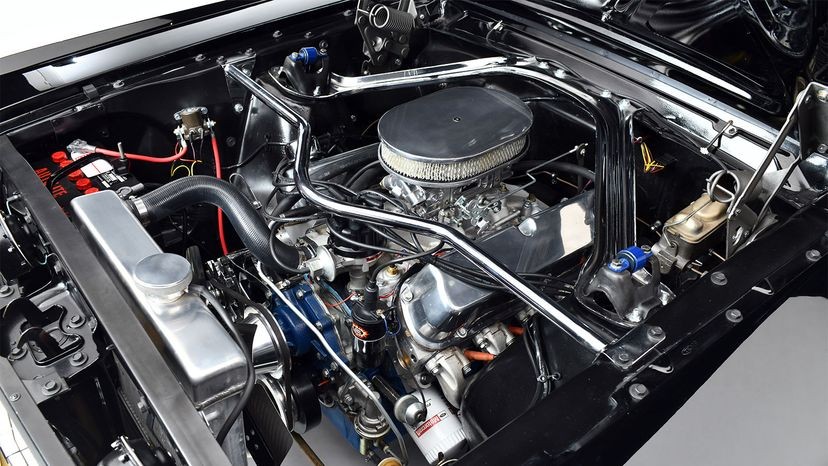Car ownership comes with numerous responsibilities, and among the most daunting is dealing with car repairs. While routine maintenance like oil changes and tire rotations are expected, major car repairs can be a significant financial burden, catching many car owners off guard. But what is a major car repair exactly? Understanding this can help you anticipate potential expenses, budget accordingly, and make informed decisions about your vehicle’s upkeep. This article will delve into what constitutes a major car repair by exploring some of the most expensive and critical fixes your car might need.
Understanding Major Car Repairs: More Than Just a Tune-Up
A major car repair goes beyond regular servicing and involves significant work to restore your vehicle’s functionality. These repairs often target essential systems, require specialized skills, and involve costly parts and extensive labor. They are not simply replacing worn brake pads or changing a light bulb; they are interventions that address critical malfunctions that can severely impact your car’s performance, safety, and reliability.
To better understand what falls under the umbrella of “major car repair,” let’s examine some of the most expensive types of car repairs. These examples will illustrate the complexity, cost, and impact of these critical automotive fixes.
1. Engine and Cylinder Damage: The Heart of the Matter
 Engine damage with exposed cylinders
Engine damage with exposed cylinders
Engine trouble is arguably the most dreaded car problem. When you hear the phrase “major engine damage,” it often signifies a repair of significant magnitude and cost. Damage to the engine cylinders, the core components where combustion happens, is particularly severe. Cylinder damage can stem from various issues, including overheating, lack of lubrication, or internal component failure.
Why is it a major repair? Repairing cylinder damage often necessitates removing the entire engine from the vehicle. The complexity of accessing and repairing internal engine components, coupled with the cost of parts like pistons, rings, or even the cylinder head itself, drives up the expense significantly. In some cases, replacing the entire engine is more cost-effective than attempting a complex cylinder repair. This can easily range from $7,000 to $10,000, making it the most expensive type of car repair.
2. Hybrid Car Battery Replacement: Powering the Future, Draining the Wallet
Hybrid vehicles offer fuel efficiency and environmental benefits, but they also introduce unique components like high-voltage batteries. These batteries are crucial for a hybrid’s operation, powering the electric motor and enabling fuel-saving features. However, hybrid batteries have a lifespan and will eventually need replacement.
Why is it a major repair? Hybrid car batteries are complex and expensive. Replacing a faulty battery pack can cost upwards of $6,000, sometimes even more. The high cost is due to the specialized battery technology, the materials used (like lithium-ion), and the intricate replacement process, which often includes computer system recalibration. Furthermore, hybrid batteries degrade over time, meaning this is a repair most hybrid owners will face eventually.
3. Transmission Replacement: Gears Grinding to a Halt
The transmission is responsible for transferring power from the engine to the wheels, enabling your car to move at different speeds. Transmission problems can manifest in various ways, such as slipping gears, rough shifting, or complete failure to engage gears.
Why is it a major repair? Replacing a transmission is a labor-intensive and costly repair. The transmission is a complex assembly of gears, clutches, and hydraulic components. Replacement involves removing the old transmission, installing a new or rebuilt unit, and refilling fluids. The cost typically ranges from $4,000 to $5,000, and can be higher for luxury vehicles or more complex transmissions. Neglecting transmission issues can lead to complete vehicle immobilization.
4. Airbag Replacement: Safety at a Price
Airbags are critical safety features designed to protect occupants during a collision. While they are life-saving devices, once deployed, airbags almost always require replacement.
Why is it a major repair? Airbag replacement is expensive because it’s not just the airbag itself that needs replacing. The deployment process often damages other components, such as the airbag control module, sensors, and sometimes even parts of the dashboard or steering wheel. Furthermore, airbag systems are linked to the car’s computer and require careful recalibration and diagnostics after replacement. Replacing airbags can cost between $2,500 to $4,000, making it a significant expense after an accident.
5. Suspension Overhaul: Riding on Rough Roads
The suspension system ensures a comfortable and controlled ride by absorbing shocks from road imperfections. It’s composed of various parts like shocks, struts, springs, control arms, and tie rods. While individual component replacements might be less expensive, a complete suspension overhaul is a different story.
Why is it a major repair? A full suspension overhaul often becomes necessary due to wear and tear over time, especially in areas with poor road conditions. Replacing multiple suspension components, especially if all shocks, struts, and control arms are involved, can quickly escalate costs. Labor is also a significant factor, as replacing suspension parts can be time-consuming and require specialized tools. A complete suspension overhaul can easily reach $2,500 to $3,500.
6. Camshaft Replacement: Engine Airflow Issues
The camshaft plays a vital role in engine operation by controlling the opening and closing of the engine valves, which regulate airflow into the cylinders. A malfunctioning camshaft can disrupt this process, leading to performance issues.
Why is it a major repair? Replacing a camshaft is a labor-intensive job that requires significant engine disassembly to access and replace the component. The camshaft is located deep within the engine, making the repair complex and time-consuming. Parts costs, combined with extensive labor, can result in a repair bill ranging from $1,500 to $3,000. Regular oil changes and maintenance can help prevent camshaft issues by keeping the engine clean and lubricated.
7. Head Gasket Replacement: Sealing Engine Components
The head gasket seals the engine block and cylinder head, preventing coolant and oil from leaking and mixing. A blown head gasket can lead to serious engine problems, including overheating and coolant leaks.
Why is it a major repair? While the head gasket itself is a relatively inexpensive part, the labor to replace it is substantial. Replacing a head gasket involves disassembling a significant portion of the engine to access and replace the gasket. The cylinder head may also need to be resurfaced to ensure a proper seal. Head gasket replacements typically cost around $2,000 or more, depending on the extent of the damage and the vehicle model.
8. Catalytic Converter Replacement: Emissions Control Costs
The catalytic converter is an emissions control device that reduces harmful pollutants in your car’s exhaust. It’s essential for meeting emission standards and environmental regulations.
Why is it a major repair? Catalytic converters are made with precious metals, making them expensive components. When a catalytic converter fails, it almost always needs to be replaced entirely, as repairs are typically not feasible. Replacement costs can easily reach $1,500 or more, making it a significant expense, particularly for older vehicles.
9. Brake Line Replacement: Essential for Stopping Power
Brake lines carry brake fluid to the brakes, enabling the braking system to function. A damaged or corroded brake line can leak brake fluid, compromising braking performance and safety.
Why is it a major repair? While brake pads are relatively inexpensive, brake line replacement is a more substantial repair. Mechanics often recommend replacing the entire brake line rather than patching a section to ensure reliability and safety. This can involve significant labor to access and replace the lines, resulting in costs around $1,000. Given the critical role of brakes in safety, this is a necessary major repair.
10. Air Conditioner Compressor Replacement: Comfort at a Premium
The air conditioner compressor is the heart of your car’s AC system, circulating refrigerant to cool the cabin. A failing compressor can lead to a non-functional air conditioning system, a significant discomfort, especially in hot climates.
Why is it a major repair? Replacing an AC compressor involves more than just swapping out a part. The AC system is a sealed system that requires proper evacuation and refrigerant recharging. The compressor itself can be costly, and labor involves system diagnostics, component replacement, and system recharge. Replacing an AC compressor typically costs around $500, and can be more if additional components or refrigerant are needed. While less expensive than some other repairs on this list, it’s still a significant and often unexpected cost.
Preparing for Major Car Repairs
Understanding what is a major car repair and the potential costs involved is the first step in being a prepared car owner. While you can’t prevent all car problems, proactive maintenance can significantly reduce the likelihood of facing major repairs. Regular servicing, timely attention to warning signs (like dashboard lights or unusual noises), and following your car’s maintenance schedule are crucial.
Budgeting for potential car repairs is also wise. Setting aside a dedicated fund for car maintenance can help cushion the financial blow when a major repair becomes necessary. Considering car repair insurance or extended warranties (though carefully evaluating their terms and conditions) can also be a strategy for managing repair costs.
In conclusion, major car repairs are significant automotive interventions that involve essential vehicle systems, complex procedures, and substantial costs. Being informed about these potential issues and practicing preventative car care can empower you to be a more responsible and prepared car owner.

